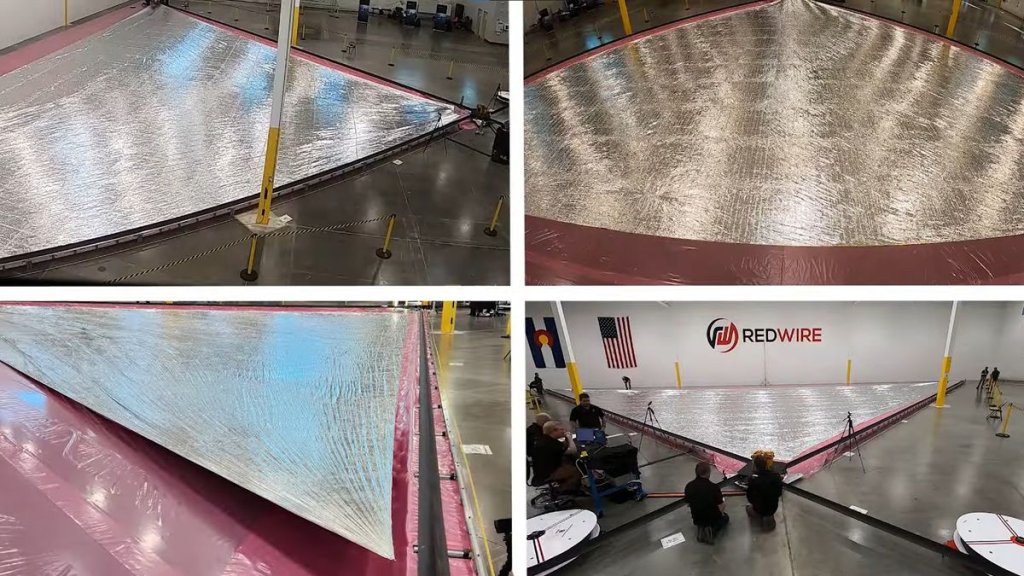
Watch NASA unfurl basketball-court-sized solar sail for deep space propulsion (Image Credit: Space.com)
NASA has reached a significant technological milestone with progress on an experimental form of spacecraft propulsion which utilizes solar radiation.
The space agency successfully deployed one of four identical quadrants of a huge solar sail at Redwire Space’s facility in Longmont, Colorado on Jan. 30. The demonstration was a big step towards some day using the technology in space and, farther in the future, utilizing the concept for deep space transportation.
“This was a major last step on the ground before it’s ready to be proposed for space missions,” NASA technologist Les Johnson said in a statement. “What’s next is for scientists to propose the use of solar sails in their missions. We’ve met our goal and demonstrated that we’re ready to be flown.”
Related: Solar-sailing probes may soon get their moment in the sun

In the same way a sailboat uses the wind to propel itself, the solar sail harnesses and reflects sunlight to generate propulsion. Particles of light, known as photons, have no mass, yet when they bounce off of a reflective surface such as the foil-like material of a solar sail, they impart some of their momentum onto it. In the vacuum of space, and with enough photons, a large amount of energy can be transferred to a solar sail over time.
When used within a solar system in which solar radiation is abundant, a solar sail can continue absorbing this momentum to accelerate as long as light reflects off of it. This means craft propelled by solar sails can reach very high speeds, much faster than a chemical rocket — at least in theory.
The major advantages of solar sails are that they do not require fuel and are very light. This makes the technology suitable for low-mass missions in novel orbits. These include orbits for studying space weather and its effects on the Earth, or for advanced studies of the north and south poles of the sun, according to NASA.
The sail will measure 17,780 square feet (1652 sq. meters) when fully deployed. It is made of a polymer material coated with aluminum with a thickness of 2.5 microns, or less than the width of a human hair.
Solar sails have gathered momentum in recent years. The first solar sail to successfully fly was the Japanese Space Exploration Agency’s Interplanetary Kite-craft Accelerated by Radiation Of the Sun (IKAROS) spacecraft in 2010. Later missions have included NASA’s NanoSail-D and the Planetary Society’s Lightsail 1 and Lightsail 2 missions.
The tech could soon be propelling low-cost, long-duration space missions and even help accelerate missions beyond the solar system. NASA’s Johnson added that lasers could even be used to accelerate the solar sails to high speeds.
“In the future, we might place big lasers in space that shine their beams on the sails as they depart the solar system, accelerating them to higher and higher speeds, until eventually they are going fast enough to reach another star in a reasonable amount of time,” Johnson said in the statement.
NASA’s Science Mission Directorate funded Redwire’s solar sail technology to reach a new technology readiness level, or TRL 6, which means it’s ready for proposals to be flown on space missions. The 1-9 TRL scale represents the stage of development of a technology, with TRL 9 meaning the system has proven through successful mission operations and is considered fully mature and operational.
The project is led by NASA’s Marshall Space Flight Center in Huntsville, Alabama. Prime contractor Redwire developed the deployment mechanisms and booms, with subcontractor NeXolve of Huntsville providing the sail membrane. Marshall developed the algorithms for controlling and navigating with the sail when it flies in space.








